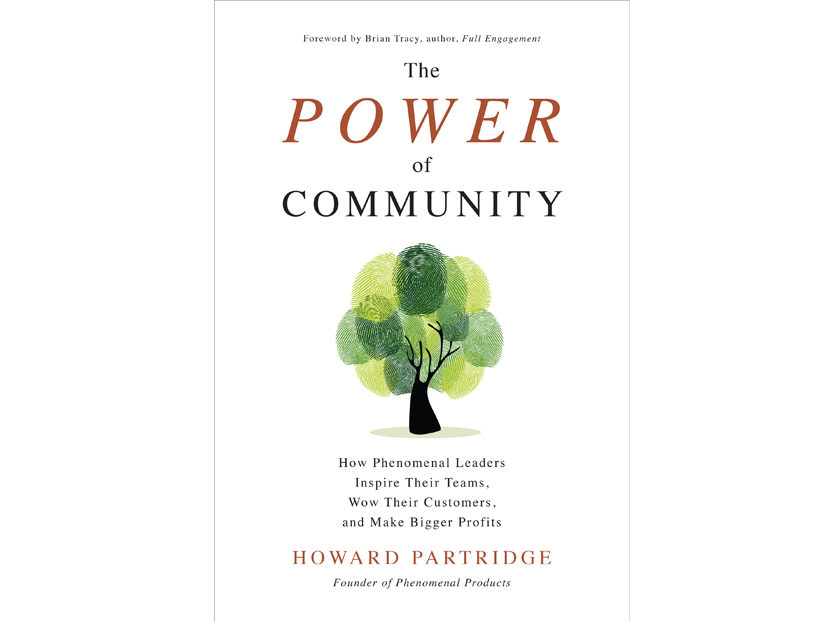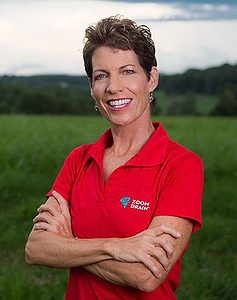The Power of Community
How to make our connectivity more meaningful.

“Today, more than ever, strangers on a screen influence people’s minds, molding their beliefs, instilling fear rather than hope.” – Howard Partridge
In the airport, I notice that literally every person within sight is looking down at his or her phone. Some of them are walking with their heads down, swerving at the last moment to avoid colliding with someone or something. Not that long ago, my fellow travelers and I might engage in eye contact or casual conversation. That moment might turn into a laugh or chance for a meaningful, thoughtful interaction.
Instead, we turn to our screens. And what we find there may not be very positive.
Now, I am not one who longs for the good old days. I can’t find a time in history that didn’t have its full serving of repression or oppression of some large group of people. However, today we are dealing with a new threat — the illusion of friendship and connection available on our “black mirrors.”
I imagine, as the pendulum swings powerfully in one direction, that it may swing back again. Perhaps we could use this moment in time as a reminder that social beings need more than social media. We need each other face-to-face, eyeball-to-eyeball.
“Put that phone down!”
You might think, or say, “They should put that @#$% phone down because I’m their boss (or dad or mom), and I say so.”
How is that approach working for you? If you tell a teenager or employee to, “Put that phone down,” you better have something worthwhile as an alternative. In other words, if “Put that phone down” is followed with an angry face-to-face interaction with you, well, I’ll stick with the phone, thank you.
While phones and tablets are problematic, do you really want to eliminate technology from your life? Not me. I love working from wherever, and finding information — yes, it takes some scrutiny — on just about everything. I love listening to motivating podcasts and enjoying comedy specials.
So, what are our options?
“Every human being has a longing for belonging.”
— Howard Partridge
Howard Partridge is my friend, a wonderful mentor and a super successful business owner. Concerned by what he perceives as increasing isolation and loneliness, he is devoted to expanding a sense of community across the planet. The word “community” has many definitions, though the ones that apply here include shared spaces, language and experiences. Connectedness. Belonging.
Howard suggests that we can transform our homes and workspaces to places of real community. You know what it feels like, right, when you experience that? At a family reunion when a shared joke sparks laughter before the punchline. In a company when a team member gets a promotion and the whole crew genuinely celebrates. People look each other in the eye and smile.
In his terrific new book, “The Power of Community,” Howard shares what he considers the three keys to unlocking community:
1. Support – The word means to hold up, bear the weight of, give assistance to. No one becomes successful all by themselves. Were you helped, somewhere along the road, by someone offering an opportunity, or the right information? Of course. Support involves getting to know what the people in your life dream of, aspire to and letting them know you will help them reach those goals.
2. Encouragement – Literally means to instill courage. To give hope. Our world is full of snarky comments. Online that can mean a nasty tweet. In person, it’s a negative jab, or criticism. Note that in our industry, troubleshooting is one of the skills that you and your teammates have developed. That’s a great thing! However, what can happen is that we are trained to pick on what’s going wrong, and neglect to notice what is going right. Encouragement involves recognizing wins and any progress in the right direction. Couldn’t we all use a lot more of this?
3. Accountability – Defined as an obligation or willingness to accept responsibility or to account for one’s actions. A culture of accountability starts with the leader. Take responsibility for your actions. Then, you can hold others accountable, too. We all make mistakes and are expected to take responsibility. That ends the blame game. Promise that you and everyone else will help fix the mistake. No one gets left out in the cold.
https://www.merriam-webster.com/dictionary
Within these keys are actions that help develop community:
Embrace diversity
Note that the obsession with our phones isn’t really a millennial thing. I know people of all ages who are seriously addicted to their devices. It isn’t a boomer thing, or a man or woman thing. Those stereotypes don’t serve us. Instead, accept that people are just wonderful, weird and different. Check out “motivational mapping” like DiSC or www.flagpages.com. These tools allow you, your family or your team members to share what drives them. It gives you all a way to express your values, what’s important to you and how you best communicate.
Everyone sets goals
Supporting a goal doesn’t mean providing it. For instance, suppose one of your team members has a goal of becoming debt-free. You could book club “The Richest Man in Babylon.” You could set up a debt reduction plan, or steer her in Dave Ramsey’s direction. Just knowing someone’s goals deepens understanding and connection.
Explore PODS. Howard has developed a process for facilitating meaningful connections. PODS stands for Power Of Discovery System. So often communication is one-sided. I talk; you listen (or check your phone.) PODS follow a structure that ensures everyone shares. It’s a great standard format for company meetings. (For specific instructions, check out Chapter 9 in “The Power of Community.”)
Energize projects
In business, at home, projects are opportunities to develop leadership and learn new skills. Often we turn to our phone when we are disengaged from what is happening around us. Give everyone access to your master list of projects and the top projects. Use good delegation techniques and empower others to get important projects done. You may be hogging all the opportunities. Let others in on the game and load ‘em up with meaningful work.
These ideas will get you started actively developing a sense of community. Combat the powerful influence of the digital world by making the present moment more compelling than the distorted reality we hold in our hands. You also have the right to set some boundaries.
• You can make the lunch or dinner table a phone-free zone. Put all phones in a basket. The first one to retrieve their phone pays for the meal — or does the dishes.
• Texting and driving is just not okay. Hands-free phone only. Consider this when communicating with service techs.
• While working with tools, no phones. Safety first.
Then, is it okay to allow them to check their phones throughout the day, without your condemnation? Sure.
One last tip: do you have someone who is absolutely obsessed with being digitally connected? Assign that person responsibility for developing and implementing a social media marketing strategy for your company! Why not? Make it a top project and create sound procedures and guidelines together. He could post something uplifting that captures your unique and wonderful community. And as I am strolling through the airport, I might find it, smile and share it.
“This world of ours ... must avoid becoming a community of dreadful fear and hate, and be, instead, a proud confederation of mutual trust and respect.” – Dwight D. Eisenhower





